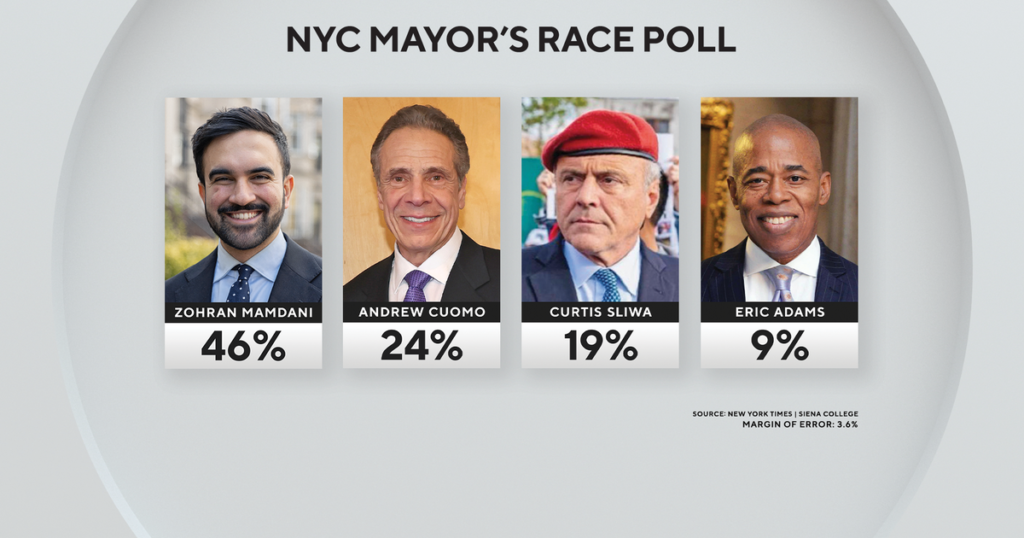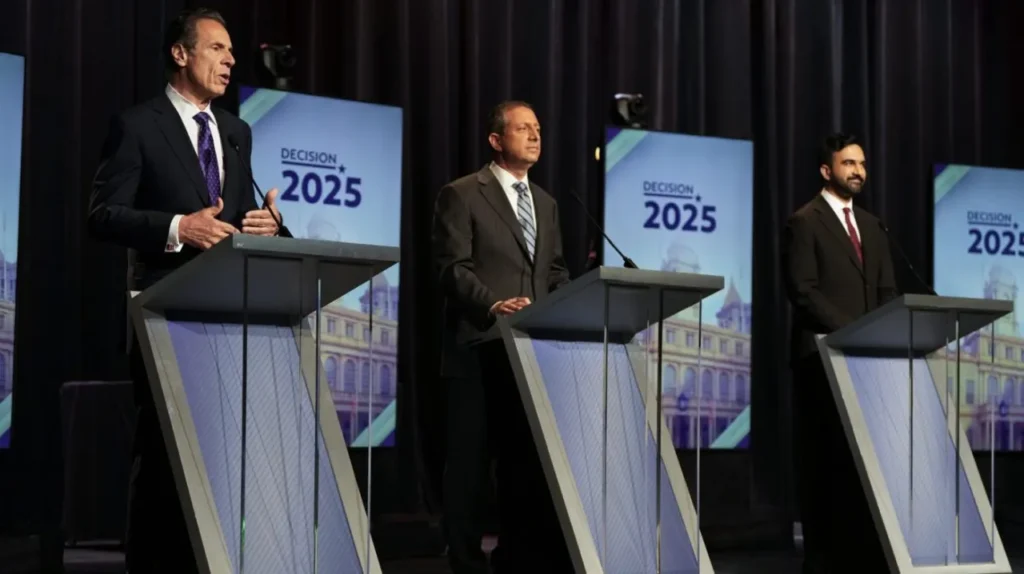NYC Mayoral Election: Mamdani Leads Cuomo as Race Tightens Ahead of Vote
Share

As the 2025 New York City mayoral election nears, the race is drawing intense national attention. Queens Assembly Member Zohran Mamdani currently leads former Governor Andrew Cuomo in multiple polls, yet the contest remains closely watched as factors such as voter turnout, candidate positioning, and demographic shifts could still alter the outcome.

Recent data from a late October poll show Mamdani at 48 percent support to Cuomo’s 32 percent among likely city voters. The gap underscores how Mamdani’s progressive platform, emphasizing rent stabilization, expanded public transit, and bold housing investments, is resonating with younger voters and immigrants.

Cuomo, on his part, is attempting a comeback. His campaign pivots on experience, public-safety credentials, and moderate economic messaging designed to appeal to older and centrist voters. Polling shows Cuomo still holds support among segments of the electorate, and if Mamdani falters or third-party dynamics shift, the race could tighten.
Demographic breakdowns reveal key trends: Mamdani leads strongly among foreign-born New Yorkers (62 percent support) and young voters under 45 (62 percent support). Cuomo remains stronger among American-born voters and some older age blocs.
But challenges remain for both. Mamdani is under scrutiny for his policy stances and outreach to certain communities, including Jewish voters, where polling shows him trailing Cuomo in some slices. Meanwhile Cuomo must overcome past controversies from his governorship and convert name-recognition into active voter support.
With New York City overwhelmingly Democratic, the primary results and general election dynamics matter greatly, not just for the city but as a barometer of national party direction. The mayoral vote also comes at a time of urgent issues for the city: housing affordability, public safety, transit infrastructure, and post-pandemic recovery.
As voting begins in stages and early ballots are cast, analysts will watch turnout by borough, age, and key demographics closely. For observers tracking the future of urban politics and the Democratic Party, this race may offer signals about the next phase of city leadership in America’s largest metropolis.




